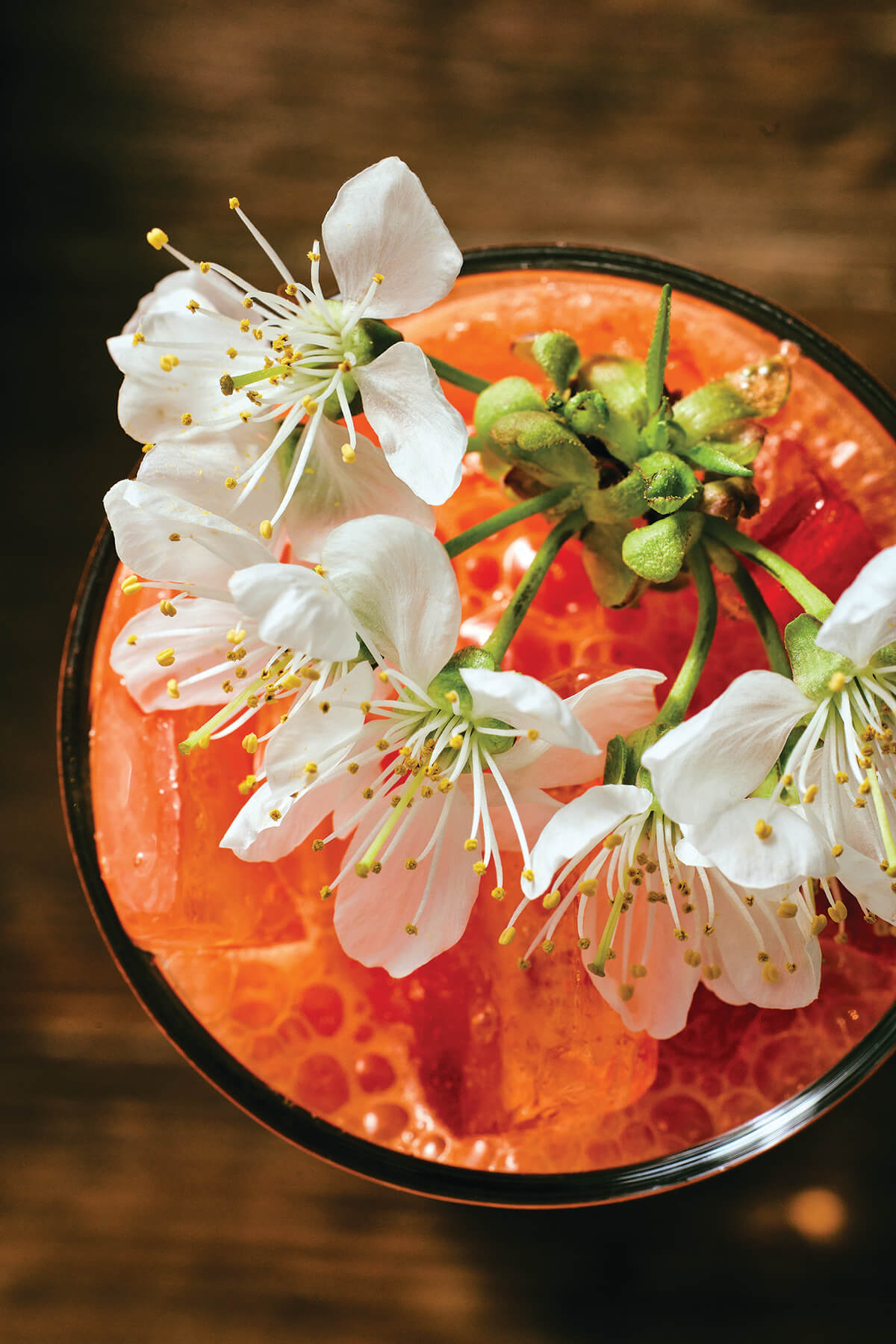Food & Drink
Edible Flowers are a Budding Trend at Area Restaurants
Foraged chef Chris Amendola discusses the technique that is prettying up area plates, cocktails, and desserts.

Thanks to warmer weather, flowers are springing up everywhere, from fields to forests to, yes, even our food.
Whether scattered on salads, strewn across cocktails, or sprinkled on cupcakes, flowers are a chef’s favorite tool to elevate their art.
“Edible flowers can add aroma and a huge pop of color to any dish,” says Chris Amendola, owner-chef of Foraged in Station North. “I like to add color to my plates and flowers really make so many dishes stand out.”
As the name of his restaurant implies, the James Beard-nominated chef forages for many of the menu’s ingredients, including mushrooms, pawpaws, ramps, and wild blueberries. And while every season yields its own gifts, the biggest bounty comes in spring and summer—when Amendola wanders in the woods to forage for cherry blossoms, wood violets, clover, nettles, and other forest flowers.
Amendola first learned to forage while working for famed forager Sean Brock at McCrady’s in Charleston, SC.
“We were on the farm and Sean said, ‘Let’s do a walk in the woods,’” recalls Amendola. “I didn’t realize you could forage anywhere. Ever since then, I’ve been spending time in the woods.”
While edible flowers are a more recent gastronomic trend, they’re also a very old one. In ancient Rome, Greece, and China, flowers were used not only in cooking, but as aphrodisiacs and for medicinal purposes.
Unlike mushroom foraging, which can be dangerous, foraging for flowers is relatively easy.
“Eating flowers is generally safe,” says Amendola, “though you should know what you’re eating. One of my favorite flowers are the wood violets, which come in purple, yellow, and orange. When people eat them at Foraged, they recognize them as something growing on their own front lawns. They’ll say, ‘I had no idea I could eat these.’ I love those moments.”